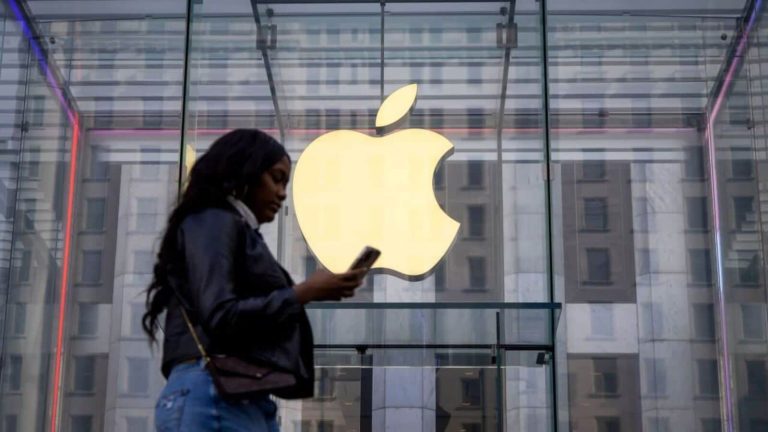Apple is grappling with a significant slowdown in China as rising competition from domestic smartphone brands and regulatory hurdles erode its position in what was once its fastest-growing market. The iPhone maker reported a 2.3 per cent drop in sales in China for its second fiscal quarter, pulling in $16 billion—short of analyst expectations of $16.83 billion.
The shortfall highlights growing challenges for the Cupertino-based company, as Chinese consumers increasingly turn to local alternatives like Huawei, Xiaomi, and Oppo. These brands have captured market share with innovative designs, including foldable devices, and aggressive pricing. At the same time, Beijing’s restrictions on foreign technology in certain workplaces have further undercut Apple’s appeal in the country.
“Apple is no longer seen as the must-have premium brand in China,” said an analyst at a Hong Kong-based brokerage. “Consumers there are looking for something new, and local brands are delivering.”
Adding to the pressure, Apple’s AI platform, Apple Intelligence, remains unavailable in China, while rivals forge ahead with artificial intelligence-powered features. The company is planning to launch AI services in the country later this year in partnership with Alibaba and Baidu, but analysts warn it may be too late to reclaim lost momentum.
Tariffs loom as another costly challenge
Beyond sluggish Chinese sales, Apple faces mounting costs from tariffs. Chief Executive Tim Cook revealed during the earnings call that the company expects an additional $900 million in tariff-related expenses this quarter. Revenue is forecast to grow in the low- to mid-single-digit percentage range, falling slightly below the average analyst estimate of five per cent.
The company has not provided guidance beyond the current period, underscoring the uncertainty tied to ongoing trade tensions. In its quarterly filing, Apple cited “trade and other international disputes” among its key risks—language it typically reserves for its annual reports.
To mitigate the impact, Apple is shifting parts of its production out of China. Cook confirmed that half of iPhones sold in the US are now manufactured in India, while most Apple Watches, AirPods, iPads, and Macs destined for the US will soon come from Vietnam, a country with lower tariffs.
Mixed performance across product categories
Despite these challenges, Apple posted a five per cent rise in overall revenue to $95.4 billion for the quarter ending 29 March, exceeding the $94.6 billion average estimate. Earnings per share came in at $1.65, narrowly beating forecasts.
iPhone sales generated $46.8 billion, surpassing projections of $45.9 billion. However, growth was under two per cent from a year earlier and remains well below the $51.3 billion reported two years ago. Analysts attribute the sluggish sales to incremental updates in the latest models, giving consumers little incentive to upgrade.
During the quarter, Apple introduced the iPhone 16e, replacing its budget $429 SE model with a pricier $599 version. Analysts suggest the higher price point may have alienated cost-conscious buyers, especially in competitive markets like China and India.
Other product lines delivered mixed results. Mac revenue reached $7.95 billion, slightly ahead of expectations. iPad sales totalled $6.4 billion, exceeding estimates thanks to refreshed low-end and iPad Air models. Meanwhile, the Wearables, Home, and Accessories segment underperformed, bringing in $7.52 billion—falling short of the projected $8.05 billion.
Tim Cook defends AI approach
Responding to questions over Apple’s AI progress, Cook defended the company’s cautious rollout of new features, including a revamped Siri voice assistant. “We’re taking the time to ensure these features meet our high-quality bar,” he told investors. “We’re making progress and look forward to getting them into customers’ hands.”
(With inputs from Bloomberg)



